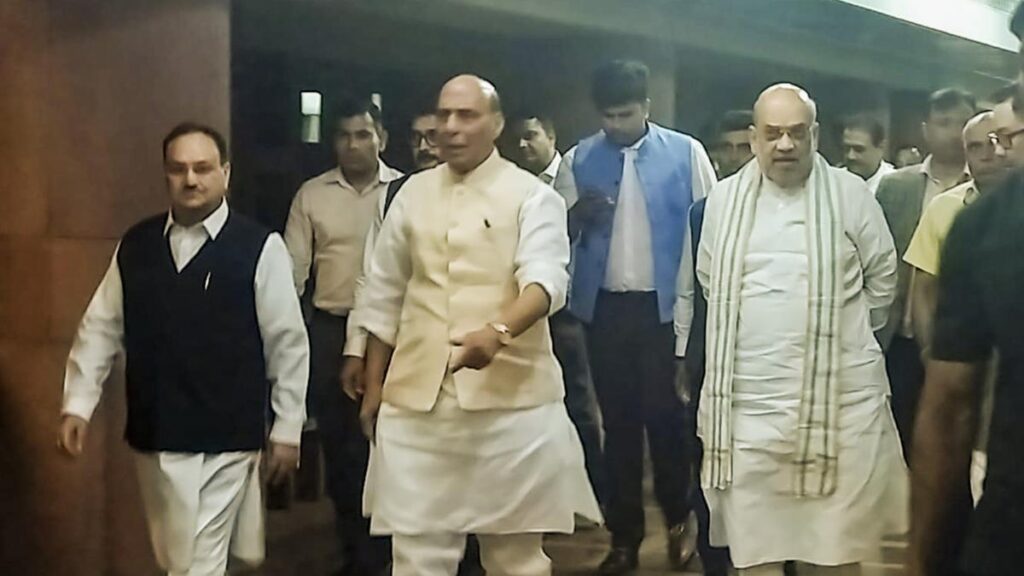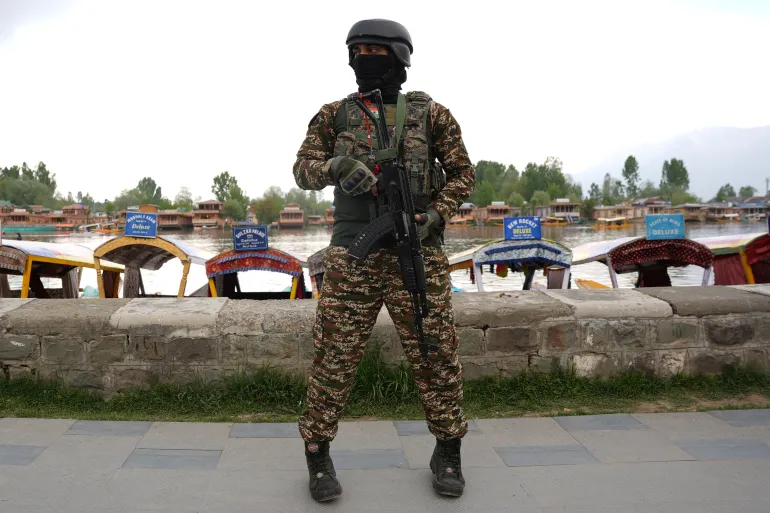April 25, 2025 | New Delhi, India
The devastating terrorist attack in Pahalgam, Jammu and Kashmir, on April 22, 2025, which claimed 26 lives, has prompted a robust response from the Indian government. With The Resistance Front (TRF), an offshoot of the Pakistan-based Lashkar-e-Taiba, claiming responsibility, India has rolled out a comprehensive 7-point action plan targeting Pakistan’s alleged support for cross-border terrorism. This blog post explores India’s strategic countermeasures, their implications, and the broader context of the Pahalgam attack, crafted to align with Google’s E-A-T guidelines for authoritative, trustworthy content optimized for search visibility.
What Happened in the Pahalgam Attack?
On April 22, 2025, five militants attacked Baisaran Valley near Pahalgam, a popular tourist spot in Anantnag district, killing 26 tourists—25 Indians and one Nepali—and injuring over 20 others. The attackers, armed with M4 carbines and AK-47s, targeted male Hindu tourists, forcing victims to recite Islamic verses and checking for circumcision before shooting them at close range. The attack, the deadliest in India since the 2008 Mumbai attacks, aimed to resist demographic changes in Kashmir, according to TRF’s claims. Survivors recounted horrific scenes, with one local pony operator, Syed Adil Hussain Shah, killed while trying to protect tourists.
The Indian government swiftly attributed the attack to Pakistan-backed terrorism, leading to a series of diplomatic, strategic, and military responses.
India’s 7-Point Action Plan Against Pakistan

Following a high-level Cabinet Committee on Security (CCS) meeting chaired by Prime Minister Narendra Modi, India announced a 7-point action plan to address the Pahalgam attack and counter Pakistan’s alleged role in fostering terrorism.
1. Suspension of the Indus Waters Treaty
India has put the 1960 Indus Waters Treaty, which governs river water sharing with Pakistan, in abeyance until Pakistan ceases support for cross-border terrorism. Pakistan called this move an “act of war,” warning of retaliation if water flows are diverted.
2. Closure of the Attari-Wagah Border Crossing
The Integrated Check Post at Attari, a key border crossing for people and goods, was shut down immediately. The Border Security Force also scaled down the ceremonial Retreat display, suspending symbolic handshakes between guards.
3. Suspension of Visa Services for Pakistani Nationals
India suspended all visa services for Pakistani nationals, ordering them to leave by April 27, 2025, except those with medical visas, who have until April 29. Long-term visas for Hindu Pakistani nationals remain valid, per the Ministry of External Affairs.
4. Downgrading Diplomatic Ties
India reduced the strength of diplomatic missions in both countries to 30 personnel from 55 by May 1, 2025. Pakistani military, naval, and air advisors in New Delhi were declared persona non grata, given a week to leave, while India withdrew its own advisors from Islamabad.
5. Military and Security Operations
The Indian Army, paramilitary forces, and Jammu and Kashmir Police launched a joint cordon-and-search operation to track the militants, who fled to the Pir Panjal range. Army helicopters were deployed, and a Rs 20 lakh reward was announced for information leading to the terrorists’ neutralization.
6. Diplomatic Isolation of Pakistan
India revoked all SAARC Visa Exemption Scheme (SVES) privileges for Pakistani nationals and scaled down ceremonial displays at border posts like Hussainiwala and Sadki in Punjab, signaling that “peace and provocation cannot coexist,” per the BSF.
7. International Support and Condemnation
PM Modi garnered global support, with leaders like US President Donald Trump, Russian President Vladimir Putin, and French President Emmanuel Macron condemning the attack. Modi emphasized a united front against terrorism, stating, “Everyone who believes in humanity is on our side.”
Context: Why This Attack Matters
The Pahalgam attack shattered the illusion of normalcy in Kashmir, a region claimed by both India and Pakistan but controlled in parts. It targeted civilians, not soldiers, marking a shift in militant strategy. The attack’s sectarian nature—targeting Hindu tourists—has fueled communal tensions, with experts warning of rising Islamophobia and extremist narratives. Kashmir has seen an ongoing insurgency since the late 1980s, exacerbated by the 2019 revocation of its special status, which allowed more non-locals to settle in the region—a move militants claim to resist.
Pakistan denies involvement, with its Foreign Ministry calling the attack “home-grown” and citing unrest in other Indian states. However, India’s intelligence points to TRF’s ties to Lashkar-e-Taiba and Pakistan’s ISI, with the attack’s timing linked to recent provocative statements by Pakistan’s military leadership.
Implications of India’s Action Plan

Diplomatic Fallout
The suspension of the Indus Waters Treaty and border closures have escalated tensions, risking a broader conflict between the nuclear-armed neighbors. Pakistan’s reciprocal measures—suspending visas for Indians, closing its airspace, and holding the Simla Agreement in abeyance—signal a complete breakdown in relations.
Military Response
Analysts like Michael Kugelman suggest a high likelihood of a military response, such as surgical strikes or airstrikes, given India’s precedent in Uri (2016) and Balakot (2019). However, the timing is complicated by the impending retirement of Northern Command chief Lt Gen MV Suchindra Kumar on April 30, 2025. A delayed response under incoming chief Lt Gen Pratik Sharma could ensure precision but risks losing momentum.
Domestic Impact
The attack has united India’s political spectrum, with leaders like Rahul Gandhi and Omar Abdullah supporting the government’s actions. However, critics like Karnataka CM Siddaramaiah have called it an “intelligence failure,” pointing to security lapses in Baisaran meadow, which lacked police permission to open.
Global Reactions
International condemnation has bolstered India’s stance, but the risk of miscalculation looms large. Pakistan’s warnings of “comprehensive retaliation” and its National Security Committee meeting on April 24, 2025, indicate a volatile path ahead.
Critical Analysis: Is India’s Plan Effective?
While India’s action plan signals resolve, its effectiveness is debated. Suspending the Indus Waters Treaty may pressure Pakistan but risks humanitarian fallout and international criticism. Diplomatic measures like visa suspensions and border closures isolate Pakistan but don’t address the root causes of terrorism. Military action, if pursued, could deter future attacks but risks escalation, especially given Pakistan’s nuclear capabilities.
The attack also exposes vulnerabilities in Kashmir’s security framework. The lack of protection in tourist areas like Baisaran suggests a need for better intelligence and local coordination. Moreover, the government’s narrative of Pakistan’s involvement, while plausible, lacks public evidence, fueling skepticism about its motives—potentially to deflect from domestic security failures.
What’s Next for India and Kashmir?

India’s immediate focus is on neutralizing the attackers, with security forces on high alert across the region. Long-term, the government must strengthen security in vulnerable areas, using technology and local intelligence to prevent such attacks. Diplomatically, India may push for Pakistan’s further isolation, possibly through forums like the UN, while domestically, it faces pressure to address security lapses without fueling communal divides.
For Kashmir, the attack threatens tourism, a key economic driver, with tourists already complaining of high airfares to leave the valley. Restoring confidence will require both security assurances and a nuanced approach to the region’s complex socio-political dynamics.